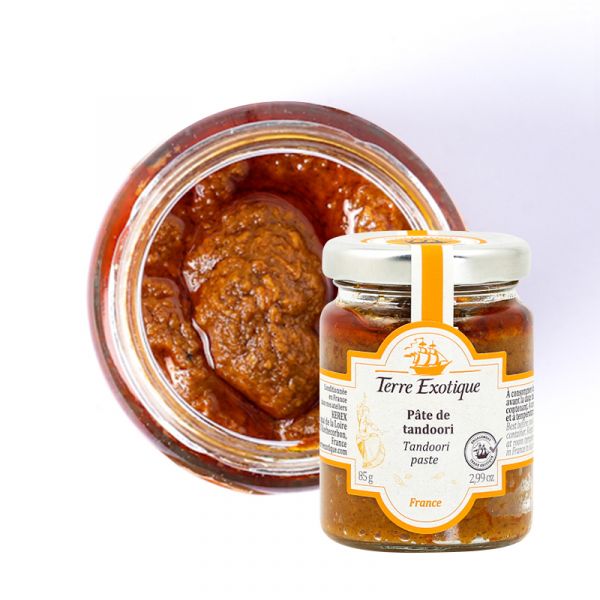



How to Use Tandoori Paste in Cooking?
Tandoori paste is perfect for marinating meats and fish before baking, pan-frying, or grilling. It can also be incorporated into sauces, soups, or stews to infuse your dishes with rich and spicy flavors. Try it to coat vegetables before grilling or mix it with yogurt for a delicious topping.
Recipe Ideas for Using Tandoori Paste
- Tandoori Chicken: Marinate chicken pieces in tandoori paste before grilling for a classic, flavorful dish;
- Spicy Shrimp: Use tandoori paste to marinate shrimp before pan-frying for an intense and exotic flavor;
- Grilled Vegetables: Coat your favorite vegetables in tandoori paste before roasting for a bold vegetarian dish;
- Tandoori Sauce: Add tandoori paste to a tomato or cream-based sauce to accompany meats and fish;
- Spiced Yogurt: Mix tandoori paste with yogurt for a creamy topping ideal for kebabs and grilled dishes;
- Spicy Soup: Stir tandoori paste into a soup for a comforting, spicy touch.
The Aromas of Tandoori Paste
On the nose, it releases intoxicating, spicy aromas with notes of cumin, coriander, ginger, and a hint of chili. This tandoori paste has smoky, salty, warm yet fresh notes, less spicy than curry paste. Its ingredients include onion, sunflower oil, vinegar, tandoori spice powder (12%, including paprika, cumin, and spices), ginger, garlic, salt, and lemon juice. On the palate, the spices combine to offer a gentle, lingering warmth, balanced by the acidity of yogurt and the freshness of herbs.
The Origin of Tandoori
Tandoori takes its name from the "tandoor," a traditional clay oven used in India and Pakistan. This oven, heated to high temperatures, allows food to cook evenly while imparting a distinctive smoky flavor. Tandoori paste, used to marinate meats before cooking them in this oven, has become an iconic element of Indian cuisine.
| Price/kg | 78,82 |
|---|---|
| Allergen | Absence |
| Native country | FRANCE |
| Ingredients | onion, sunflower oil, white vinegar, tandoori spices mix |
| (12% including paprika, cumin, spices), ginger, garlic, salt, | |
| lemon juice. | |
| Nutritional Info | VN Energie pour 100 g (energy for 100g) : 1124 kJ / 269 kcal VN Matière grasse (fat) : 23 g Dont acide gras saturés (of which saturated fat) : 2.7 g VN Glucides (carbohydrate) : 14 g Dont sucres (of which sugars) : 3.2 g VN Protéines (protein) : 2.7 g Vn Sel (salt) : 1.4 g |
| Contenance | 85g |
| TRACES EVENTUELLES D'ALLERGÈNES | céleri, sésame, moutarde, fruits à coques. |
 Français
Français 
